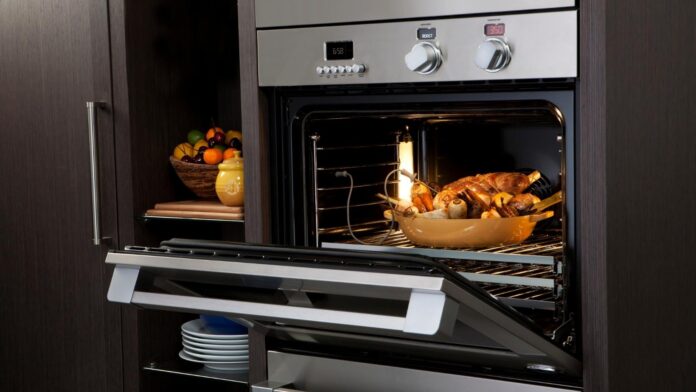Are you wondering how to determine whether your oven is gas or electric? It’s a common question that many people have, especially when moving into a new home or buying a used oven. Luckily, there are a few simple ways to find out without needing any specialized knowledge.
First, check the control panel of your oven. If you see knobs labeled with temperature settings (such as 350°F) and buttons for various cooking modes (bake, broil, etc.), it’s likely an electric oven. On the other hand, if you find knobs marked with heat levels (low, medium, high) and a separate knob for the oven’s pilot light or ignition system, then it’s probably a gas oven.
How do I Know if My Oven is Gas or Electric
If you find yourself pondering, “How do I know if my oven is gas or electric?” fear not, dear reader. I’m here to shed some light on this perplexing question. Differentiating between gas and electric ovens doesn’t have to be a daunting task. Let’s dive in and discover the key factors that can help you determine what type of oven you have.
- Fuel Source: The first clue lies in the fuel source of your oven. Gas ovens are fueled by natural gas or propane, while electric ovens rely on electricity to generate heat. Take a moment to check if there is a gas line connected to your oven or if it has a dedicated electrical plug.
- Burners or Heating Elements: Inspecting the cooking area can also provide valuable insights. Gas ovens typically feature burners with visible flames, whereas electric ovens use heating elements concealed beneath solid metal coils or ceramic glass tops.
- Control Panel: Examining the control panel can offer further clues about your oven’s type. Gas ovens usually have knobs for controlling the flame intensity, while electric ovens often come equipped with digital displays and touchpad controls.
- Ignition Method: Consider how your oven ignites as another point of distinction. Gas ovens commonly utilize a pilot light or electronic ignition system, where an electric spark ignites the gas flow upon turning on the burner knob. On the other hand, electric ovens require no ignition mechanism since they solely rely on electricity for heating purposes.
- Safety Features: Lastly, take note of any safety features present in your oven that might indicate its type. Gas ovens often have built-in safety valves that shut off the gas supply if a flame goes out unexpectedly, promoting safety in case of accidental extinguishment.
By carefully observing these key factors – fuel source, burners/heating elements, control panel, ignition method, and safety features – you should be able to determine whether your oven is gas or electric. Remember, if you still have doubts or need assistance, consult the user manual or contact a professional for expert advice.

Examining the Control Panel
When trying to determine whether your oven is gas or electric, one of the key areas to look at is the control panel. By closely examining the control panel, you can gather important clues that will help you identify the type of oven you have. Here’s what to look for:
- Display and Settings: Take a close look at the control panel display and settings. Gas ovens typically have simpler controls with basic knobs or buttons for temperature and baking options. On the other hand, electric ovens often feature digital displays with more advanced functions like timers, preheat indicators, and cooking modes.
- Power Indicator: Check if there is a power indicator light on your control panel. Gas ovens usually don’t have this feature since they rely on a direct flame for heat generation. Electric ovens, however, require electricity to operate and commonly include a power indicator light to show when it’s turned on.
- Ignition Button: Some gas ovens may have an ignition button on the control panel used to start the flame manually. This button is not present in electric ovens as they don’t require ignition.
- Safety Features: Look for any safety features displayed on the control panel such as child lock or automatic shut-off options. These features are more commonly found in electric ovens due to their electronic nature.
Remember that these are general guidelines and individual oven models may vary in terms of design and features. If you’re still unsure about whether your oven is gas or electric after examining the control panel, it’s always best to consult your oven’s user manual or contact the manufacturer directly for accurate information.
By carefully inspecting your oven’s control panel display, settings, power indicator, ignition button (if applicable), and safety features, you can gain valuable insights into whether your oven operates with gas or electricity.


